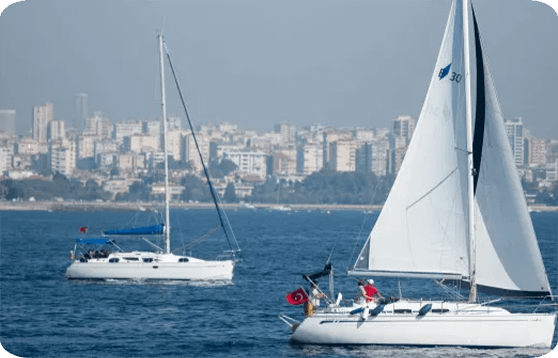Sadly, the safety message around boating and water activities is still not getting through to all people. Too often the media is reporting on injury and lives lost from boating incidents and in many cases it is due to a lack of safety equipment. This underscores the importance of utilizing reliable providers and dealers, like Yatala Boats, to ensure that individuals are equipped with not only quality watercraft but also the essential safety features and information needed for secure journeys on the water.
Safety is paramount for all boat owners and many states and territories have strict restrictions and laws around what gear and equipment is mandatory for boats. You will need to check your state’s maritime department for details but we’ll give you a quick rundown on some of the basics.
The Essential – Lifejackets
Most states will have mandatory requirements that every boat must carry enough lifejackets of a specified type for the number of persons licensed to be carried on that boat. On recreational boats, they are the most important item of safety equipment. Some jurisdictions will require that lifejackets be worn at all times when the boat is underway.
There are 3 main types of lifejackets which have different buoyancy standards and are designed to suit different marine circumstances.
- Level 100
- Level 50
- Level 50S
In NSW for example, in enclosed waters Level 50S lifejackets must be worn:
- At all times by children under 12 on vessels under 4.8m
- On boats under 4.8m between sunset and sunrise, on alpine waters and when boating alone
- On PWCs at all time and on people being towed
- On canoes, kayaks, sailboarding and off the beach between sunset and sunrise, on alpine waters and when boating alone
While in open waters, the restrictions are understandably tighter with level 100 and greater lifejackets required under most circumstances.
Storing and Access
Lifejackets are not much help if they are not easily accessed in an emergency and if they are not maintained in top working condition. Ensure yours are stowed in an easy to access place and that all passengers know where they are. Some regulations insist in clearly visible labelling on the cupboard or space where they are store. Check your lifejackets regularly to ensure they are in good working order.
General Checklist
Depending on the size of your boat and on what waters you travel, there is a range of safety equipment which you should consider investing in. Some are compulsory in some jurisdictions, some are simply common sense.
Here’s a few to consider.
- Bilge pump
- Fire extinguisher
- Bailing bucket
- Distress flares
- EPIRB
- Waterproof torch
- Tool kit
- First aid kit
- Marine radio
- Paddles or oars in case of engine failure
- Compass
- Air horn, whistle, bell or other sounding device
- On large vessels – a life raft or inflatable dinghy
Some emergency equipment such as flares and EPIRBs have expiry dates. Note the dates and replace regularly.
One interesting item is a Life Cell which is a floatable device which contains all your essential safety items. It is designed to automatically break free of its mounting bracket in the case of the boat becoming submerged. The crew can then grab the cell and access the required flares, EPIRB and other emergency equipment.
Purchasing Safety Equipment
To prepare for safe boating, seek a supplier with a reputation for quality equipment. Shipwright stores, chandleries and other boating suppliers usually stock good ranges and a great source of information. Camping, outdoor and boating stores such as BCF and Anaconda may also suit. There are quite a few online suppliers and when purchasing online, ensure you receive assurances that the products are genuine.
When buying a boat, new or used, consider including all the safety equipment you require in the purchase price and ask your Jade consultant to include the cost in your boat loan. This may enable you to purchase a higher quality and upgrade to a better brand without breaking your budget.
Some boating warehouses and super stores sell entire kits in duffle-style bags and other containers which have many of the items you may require. It’s worth having a look around and get yourself fully set-up.
Safety Compliance
States and territories have their own rules around safety and non-compliance can attract significant fines. Check with your local authority and follow their guidelines
Most importantly, ensure that the boat you purchase is suited to the conditions you intend to travel on and to – enclosed waters, open waters, offshore etc. If purchasing a used boat, get a condition report from a qualified marine engineer or similarly qualified person.
We want all our customers to enjoy their boating must most importantly to enjoy safe boating. .
To discuss cheap loans on new and used boats, contact Jade Boat Loans and speak with one of our consultants 1300 000 003
DISCLAIMER: THE INFORMATION PROVIDED IS FOR GENERAL CONSIDERATION. ANY REFERENCE TO OFFICIAL GOVERNMENT POLICIES HAS BEEN SOURCED FROM AUSTRALIAN GOVERNMENT AND STATE GOVERNMENT SOURCES. INFORMATION ON INDIVIDUAL VEHICLE SPECS IS SOURCED FROM THE MANUFACTURER WEBSITE. NO LIABILITY IS ACCEPTED FOR ANY ERRORS IN PRESENTATION OR INTERPRETATION OF THE FACTS AS PROVIDED BY THESE SOURCES. WE ADVISE ALL INDIVIDUALS AND BUSINESSES TO REFER TO THEIR ACCOUNTANT OR FINANCIAL ADVISOR FOR PROFESSIONAL ADVICE SPECIFIC TO THEIR INDIVIDUAL CIRCUMSTANCES.

